Abstract
Synthesis of reserve polysaccharide by mixed rumen organisms fermenting glucose, maltose, cellobiose, and xylose has been studied in relation to the adenosine triphosphate energy calculated to be available from substrate fermentation. About 80% of the energy available from glucose and xylose was used for polysaccharide synthesis, whereas, assuming hydrolytic cleavage of the disaccharides, more than 100% was used when cellobiose and maltose were the substrates. If, however, phosphorolytic cleavage of the disaccharides, for which there is evidence, was involved, the energy from both maltose and cellobiose fermentation was used with about the same efficiency as that from glucose and xylose fermentation. The rumen fluid used was collected 24 hr after feeding, and growth of microorganisms in such samples was sufficient to account for utilization of less than 10% of the total energy becoming available during the 40-min incubation period.
Full text
PDF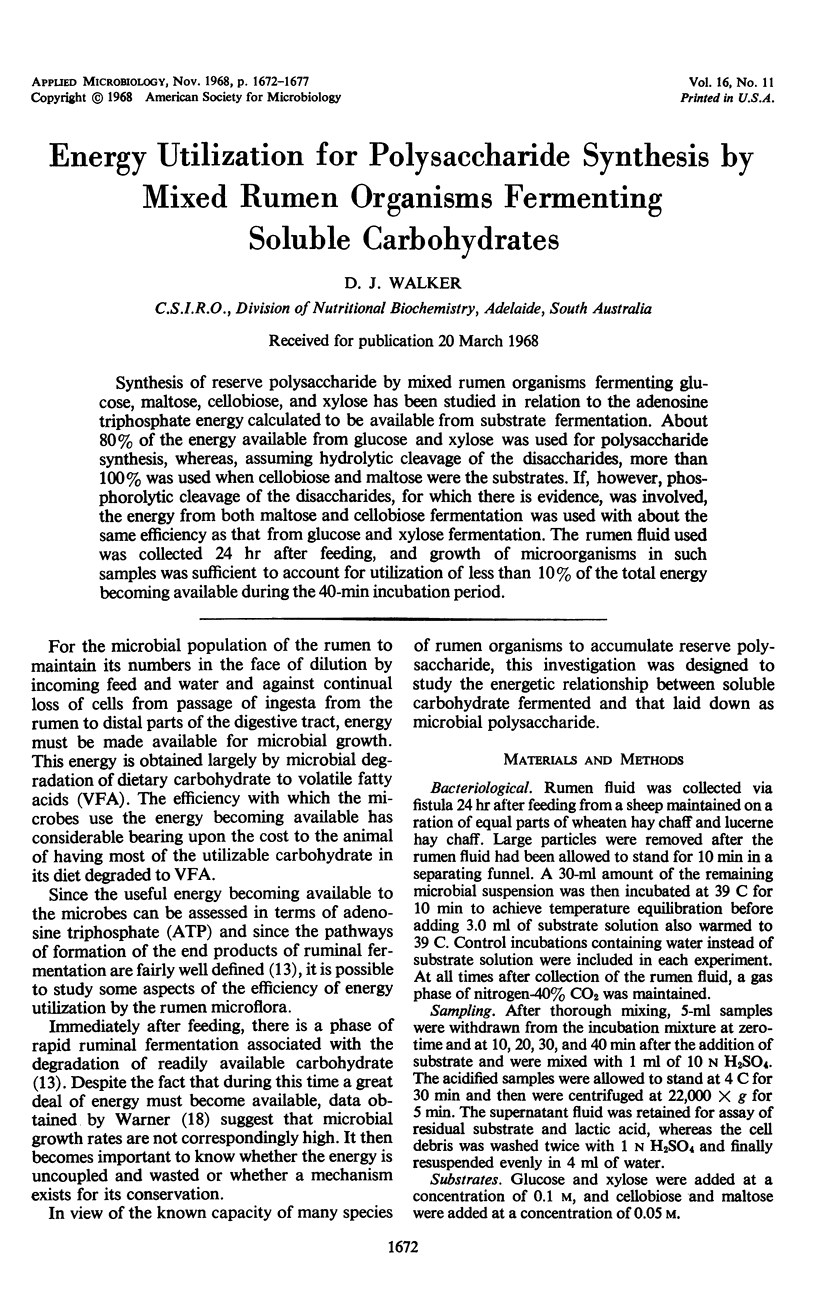
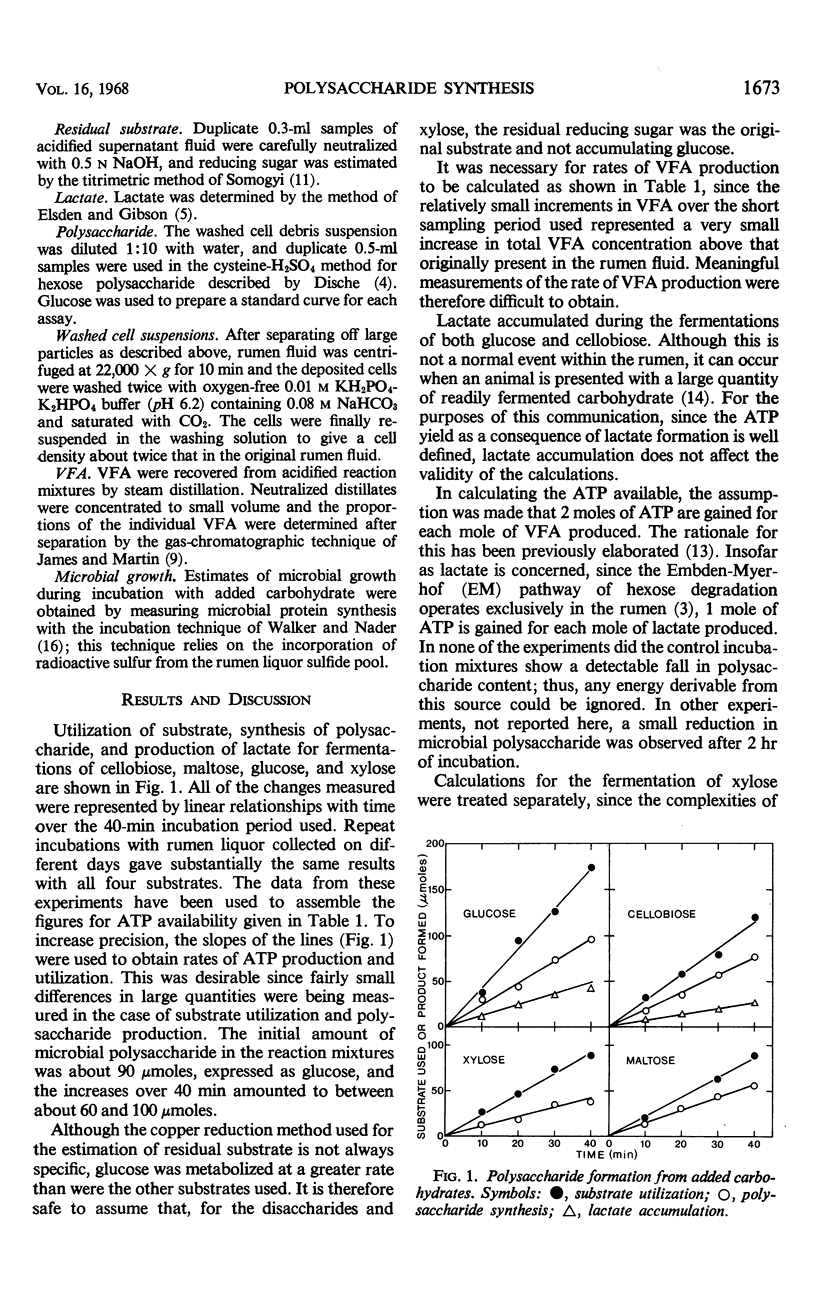
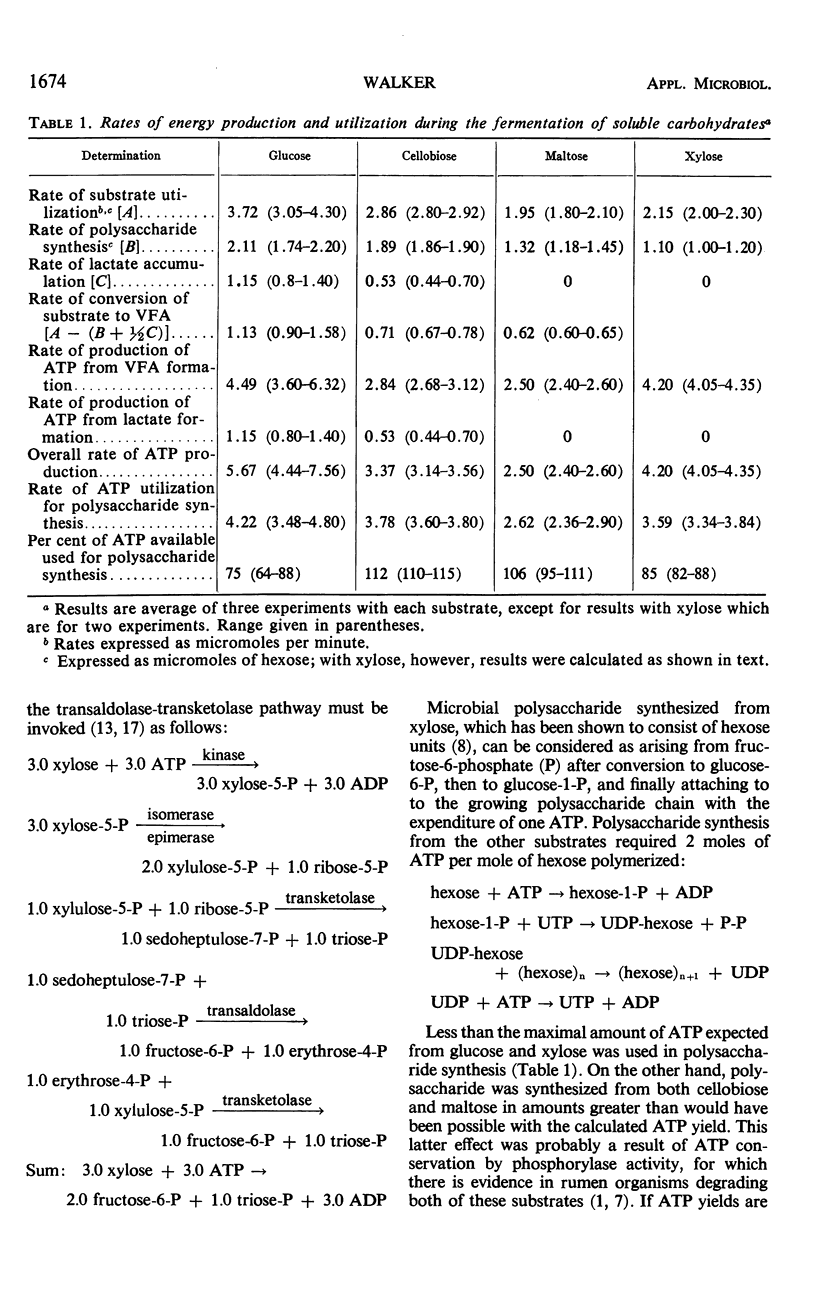
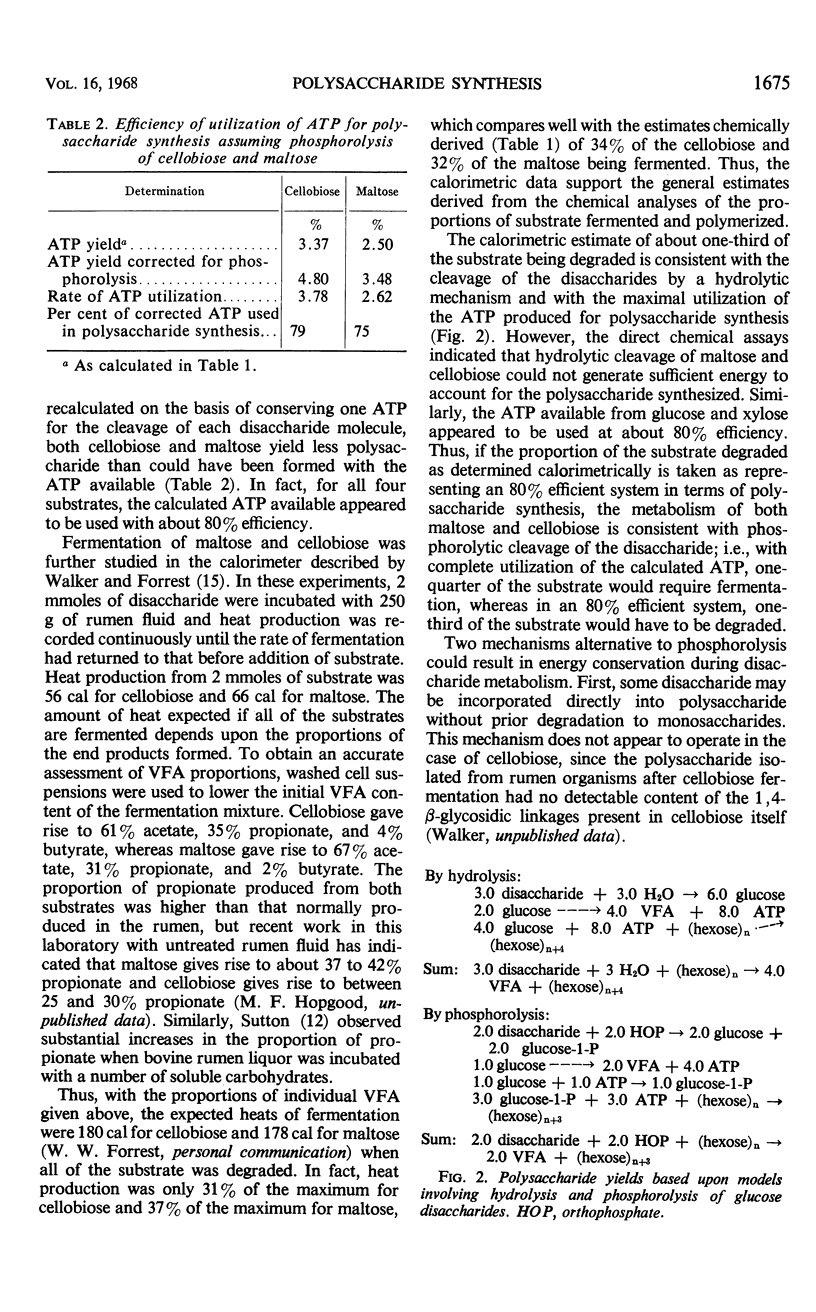
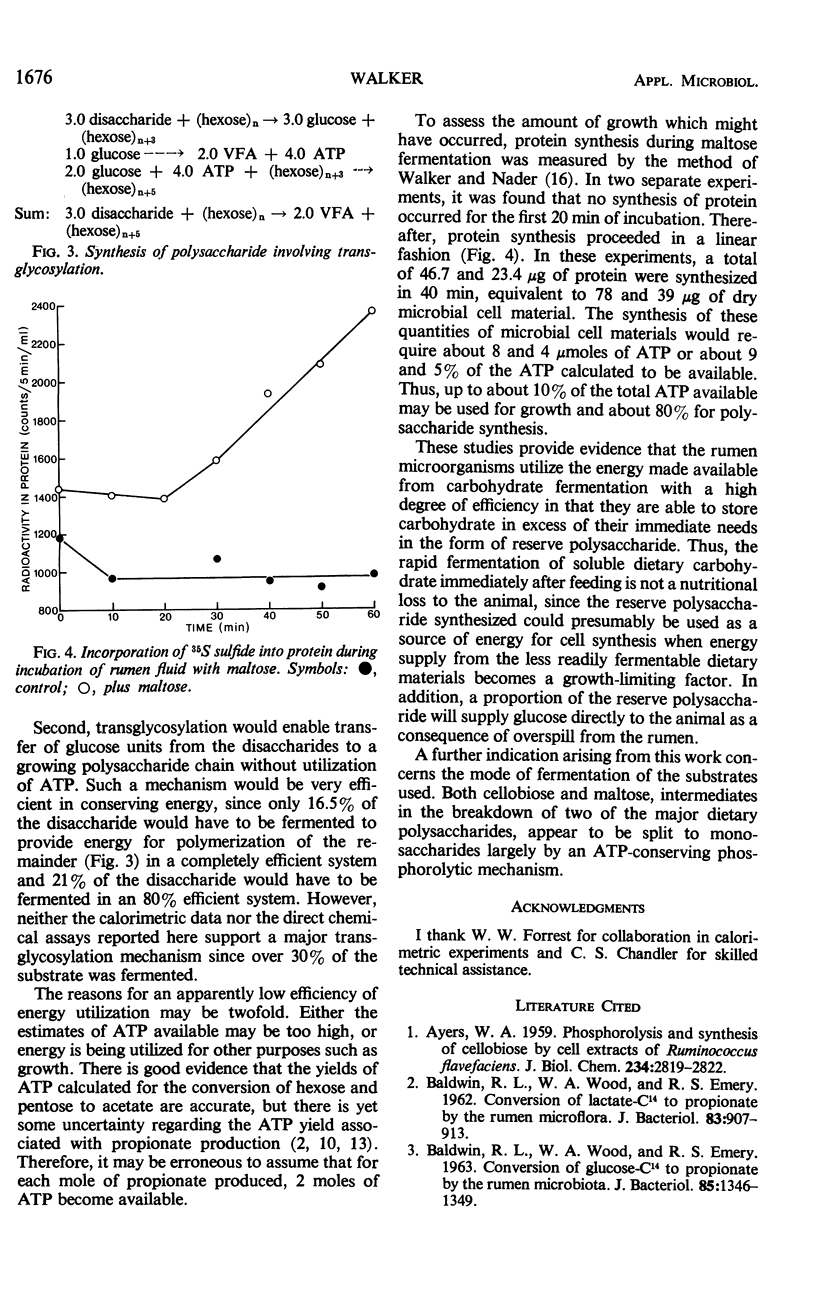
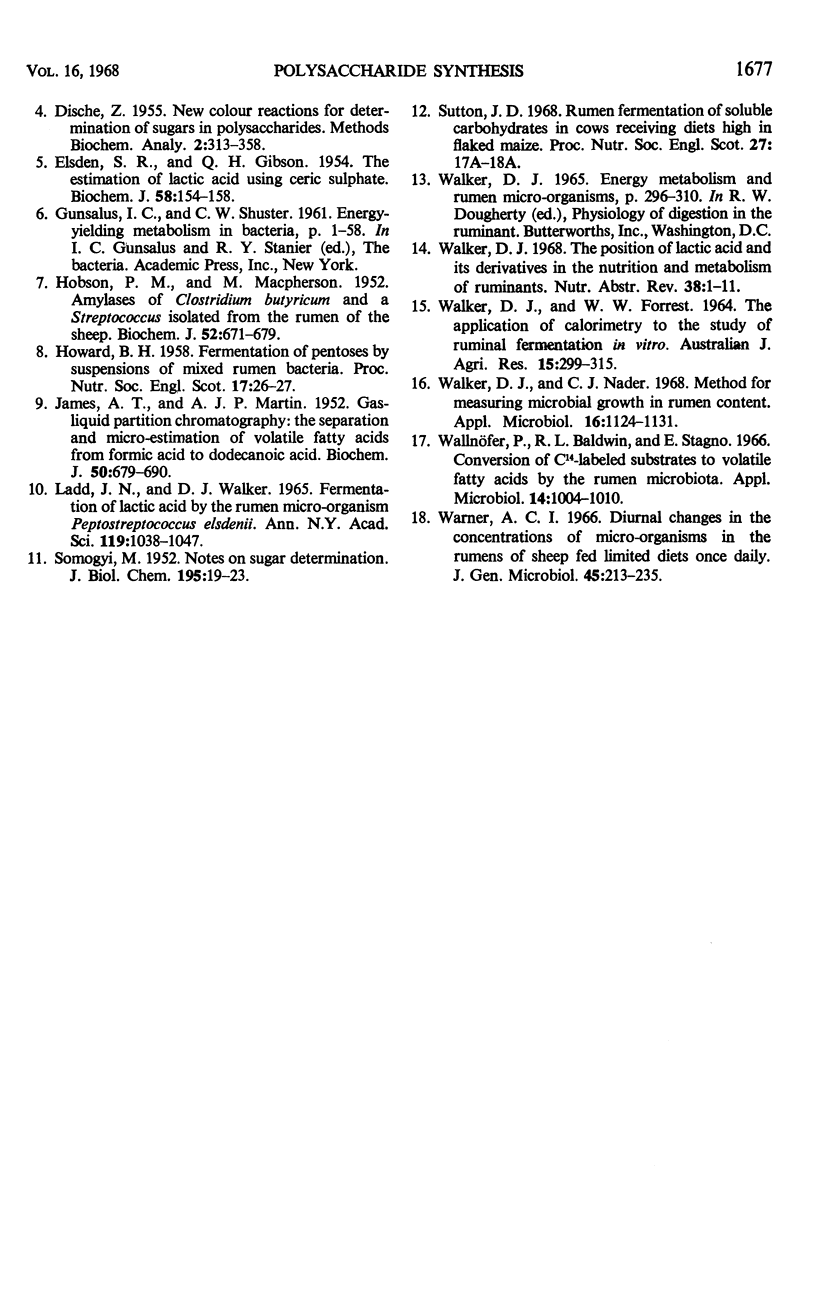
Selected References
These references are in PubMed. This may not be the complete list of references from this article.
- AYERS W. A. Phosphorolysis and synthesis of cellobiose by cell extracts from Ruminococcus flavefaciens. J Biol Chem. 1959 Nov;234:2819–2822. [PubMed] [Google Scholar]
- BALDWIN R. L., WOOD W. A., EMERY R. S. CONVERSION OF GLUCOSE-C14 TO PROPIONATE BY THE RUMEN MICROBIOTA. J Bacteriol. 1963 Jun;85:1346–1349. doi: 10.1128/jb.85.6.1346-1349.1963. [DOI] [PMC free article] [PubMed] [Google Scholar]
- BALDWIN R. L., WOOD W. A., EMERY R. S. Conversion of lactate-C14 to propionate by the rumen microflora. J Bacteriol. 1962 Apr;83:907–913. doi: 10.1128/jb.83.4.907-913.1962. [DOI] [PMC free article] [PubMed] [Google Scholar]
- DISCHE Z. New color reactions for determination of sugars in polysaccharides. Methods Biochem Anal. 1955;2:313–358. doi: 10.1002/9780470110188.ch11. [DOI] [PubMed] [Google Scholar]
- ELSDEN S. R., GIBSON Q. H. The estimation of lactic acid using ceric sulphate. Biochem J. 1954 Sep;58(1):154–158. doi: 10.1042/bj0580154. [DOI] [PMC free article] [PubMed] [Google Scholar]
- HOBSON P. N., MACPHERSON M. Amylases of Clostridium butyricum and a Streptococcus isolated from the rumen of the sheep. Biochem J. 1952 Dec;52(4):671–679. doi: 10.1042/bj0520671. [DOI] [PMC free article] [PubMed] [Google Scholar]
- JAMES A. T., MARTIN A. J. P. Gas-liquid partition chromatography; the separation and micro-estimation of volatile fatty acids from formic acid to dodecanoic acid. Biochem J. 1952 Mar;50(5):679–690. doi: 10.1042/bj0500679. [DOI] [PMC free article] [PubMed] [Google Scholar]
- Ladd J. N., Walker D. J. Fermentation of lactic acid by the rumen microorganism, Peptostreptococcus elsdenii. Ann N Y Acad Sci. 1965 Jul 31;119(3):1038–1047. doi: 10.1111/j.1749-6632.1965.tb47460.x. [DOI] [PubMed] [Google Scholar]
- SMOGYI M. Notes on sugar determination. J Biol Chem. 1952 Mar;195(1):19–23. [PubMed] [Google Scholar]
- Walker D. J., Nader C. J. Method for measuring microbial growth in rumen content. Appl Microbiol. 1968 Aug;16(8):1124–1131. doi: 10.1128/am.16.8.1124-1131.1968. [DOI] [PMC free article] [PubMed] [Google Scholar]
- Walker D. J. The position of lactic acid and its derivatives in the nutrition and metabolism of ruminants. Nutr Abstr Rev. 1968 Jan;38(1):1–11. [PubMed] [Google Scholar]
- Wallnöfer P., Baldwin R. L., Stagno E. Conversion of C-labeled substrates to volatile Fatty acids by the rumen microbiota. Appl Microbiol. 1966 Nov;14(6):1004–1010. doi: 10.1128/am.14.6.1004-1010.1966. [DOI] [PMC free article] [PubMed] [Google Scholar]
- Warner A. C. Diurnal changes in the concentrations of micro-organisms in the rumens of sheep fed limited diets once daily. J Gen Microbiol. 1966 Nov;45(2):213–235. doi: 10.1099/00221287-45-2-213. [DOI] [PubMed] [Google Scholar]


